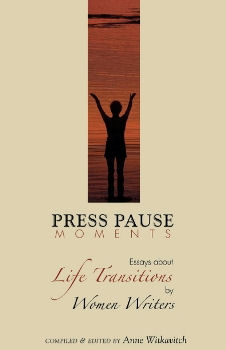
Adele Annesi is an award-winning editor and writer. She was a development editor for Scholastic, and is now a book editor specializing in business, culture and memoir. Her columns, reviews and stories appear in blogs, newspapers, magazines and literary journals, including 34th Parallel, The Fairfield Review, Hotmetalpress, Marco Polo Quarterly, Miranda Literary Magazine, The Pittsburgh Quarterly, Southern Literary Review and Tertulia. Her "After the Sunflowers" essay is part of Press Pause Moments: Essays About Life Transitions by Women Writers . Adele conducts workshops for libraries and other venues. She is currently working on a novel and a series of short stories. Visit her award-winning editing blog for writers, Word for Words , and her online workshop at Adele M. Annesi . |
Flash of Insight or Flash in
the Pan:
|
|
Ever have an idea ignite to suddenly reveal a new dimension of a character or story? It could be the light at the tunnel’s end or an oncoming train. Here’s how to vet sudden inspiration. As an editor, I get queries from writers saying they were suddenly inspired on how to fix a complex character or plot problem. While we hope they’re right, it’s best to begin with the premise that an idea is like a spark. It may take more than one to fire things up. Two common areas where inspiration can greatly help, or hinder, are the superficial character and the lackluster story. We’ll start with the one-dimensional character. First, it’s common to have comparatively flat characters in a first draft, even of a nonfiction piece. After all, you’re still getting to know these people and how to portray them. But then, while you’re writing draft two, something unexpected happens. A character does something unscripted, or wants to. Do you let her? The answer, usually, is yes. Some writers can follow the consequences of a character’s unexpected action in their minds. Certainly, the imagination is a great place to start. To put this new facet of a character to the test, it’s best to sketch out the scene. You’ll have to edit it; you may even need to file it away for future use. But the exercise of writing what the action—or the desire behind it—reveals is invaluable. Here’s an example. A husband and wife are on the verge of divorce. The wife’s mother has been instrumental in destroying the relationship, and the husband has said so for years. Just as the couple comes to grips with their plight, the wife’s mother suicides, leaving a note confessing what she’s done. The husband is tempted to say, “I told you so.” He’s that type. Instead, he’s moved with compassion for his wife, though he’s exhibited precious little of this trait before. Does the writer let him express his emotions? The answer is yes, not because it’s expected in a situation like this, but because the husband’s response is spontaneous and shows another side of him. The couple may still break up, but if they do, it won’t be because of the clichéd “my husband is an ogre” rationale. The great thing about this scene is that it not only reveals another aspect of the husband, it also advances plot. Two positive outcomes for the effort on one. Still, the important thing isn’t just that the husband turns out not to be the brute he’s been so far, but to consider why he showed compassion in this instance. What previously untapped aspect of his character and past prompted him to show such empathy? The writer may not use this bit of backstory overtly now, but it will inform her development of the husband, and she may choose to use some aspect of the husband’s history later on. It’s also common for unexpected plot twists to arise in later drafts. Here’s an example. A woman returns to Barcelona for business and family obligations. She dreads the trip because her grandfather, with whom she was close as a child, has dementia. On the surface, the story is about the woman confronting the |
reality that life in the land of her youth is no longer what it was, a la You Can’t Go Home Again. However, when the woman boards a train to the Mediterranean coast, she meets a young artist who reminds her of another creative type she met years ago. Does she engage in conversation with this younger man, and leave it at that? Probably not. Tracing her decision to have an affair with the young artist, presumably to avoid the sadness of her family situation, could bring her full circle to realize she can’t expect anyone to “create” a life for her, that her life is her responsibility, as are her choices and their consequences. A difficult lesson, but one that makes the outcome more valuable because of the cost. Here, again, it’s important to understand why the woman makes one choice instead of another, even if the writer doesn’t include all the details. From examples like these, It’s clear that characters and stories are inextricably linked, and that the choice we make about one impacts the other, especially if we want to take our work to the next level. So don’t ignore that spark of a new idea. It may fizzle because it didn’t accomplish what you hoped, or it can fan your story and characters into flame. To pose an editing query, contact Adele Annesi. To see my online writing workshop. Press Pause Moments: Essays About Life Transitions by Women Writers Press Pause Moments: Essays About Life Transitions by Women Writers .  |








